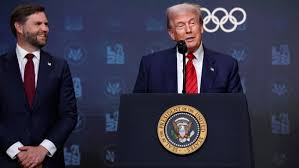Trump doubles tariffs on India to 50%, but offers 21 days window for negotiations

Washington, D.C./New Delhi | August 7, 2025
Former U.S. President Donald Trump has announced a dramatic increase in tariffs on Indian imports, raising them from 25% to 50%. He cited trade imbalances and what he described as unfair practices by India. Despite the steep hike, Trump offered a 21-day window for Indian authorities to renegotiate terms.
The move, made during an election campaign stop in Michigan, has sparked concern in both countries. It affects over $25 billion worth of goods, including textiles, leather, pharmaceuticals, auto parts, and agricultural products.
“India Has Taken Advantage of Us for Too Long”
While addressing his supporters, Trump claimed India has long imposed high taxes on U.S. goods. He accused Indian leaders of blocking American products while benefiting from open access to U.S. markets.
“India taxes our products, blocks our businesses, and takes advantage of our trade,” Trump said. “Now we’re raising tariffs to 50%. But we’re giving them 21 days to come to the table.”
Trump framed the move as a defense of American workers. He warned that failure to reach a fair deal would lead to long-term tariff enforcement.
India Aims for Diplomacy
India’s response was measured. Officials from the Ministry of External Affairs released a short statement. They expressed readiness to hold constructive talks with the U.S. government.
“We are assessing the situation. India supports fair trade and is open to dialogue,” the ministry stated.
Commerce Minister Piyush Mehta added that India is forming a delegation to visit Washington in the coming weeks. He emphasized the need to protect Indian exporters and maintain balanced trade ties.
What the Tariffs Impact
The U.S. remains India’s largest trading partner. Indian exports to the U.S. crossed $80 billion in 2024. A sudden 50% tariff threatens key industries, particularly small exporters.
Textiles, leather, and processed foods are among the most affected sectors. These industries employ millions of Indians. Many exporters now worry they may lose access to the American market.
“We rely heavily on U.S. orders. These new tariffs will hurt our business during peak season,” said Priya Shah, who runs a garment export firm in Mumbai.
American companies that import raw materials or components from India may also face rising costs. Several U.S. trade groups have urged the Trump campaign to reconsider.
“Higher tariffs could backfire. They’ll push up prices for American consumers,” warned a spokesperson from the American Apparel & Footwear Association.
A Political Strategy?
Analysts believe the tariff hike is not just economic. Trump’s team likely timed it to energize voters who support strong trade protection.
“This fits Trump’s ‘America First’ message,” said Michael Thornton, a political analyst. “He’s sending a signal that he will defend U.S. workers.”
Trump used similar tactics during his first term. In 2018, he threatened India with tariff hikes but later struck a compromise. Experts say this may be another attempt to force negotiations through pressure.
A Narrow Window for Talks
Though the announcement was tough, the 21-day window offers a chance for diplomacy. Trump hinted that he’s open to a new deal if India agrees to better trade terms.
Trade experts in India suggest the government may offer greater U.S. access in areas like technology, agriculture, or e-commerce.
“India should negotiate from strength,” said Radhika Menon, a Delhi-based economist. “We must protect our exporters but also show flexibility.”
Talks are expected to begin next week. Indian officials plan to consult industry leaders before heading to Washington.
Global Reactions and Wider Impact
Other countries are watching closely. The U.S.-India trade relationship holds global significance. A breakdown could affect international markets, especially in Asia.
The tariff move comes at a sensitive time. Inflation, climate-related disruptions, and political instability already threaten global trade flows. Experts warn that escalating tensions between major economies could lead to lasting damage.
“This is not just about two countries,” said an official from the World Trade Organization. “When large economies fight, smaller ones suffer too.”
What Lies Ahead?
The next three weeks will shape the future of U.S.-India economic ties. If both countries act with restraint, they can prevent escalation. If not, they risk a broader trade conflict.
India has the tools to respond but may avoid retaliation, at least for now. Its goal appears to be preserving access to U.S. markets while resisting unfair demands.
American businesses, especially importers, will also watch the negotiations closely. Many hope for a deal that avoids sharp price hikes or product shortages.
Final Thoughts
Trump’s decision to double tariffs is bold, risky, and deeply political. But it also opens a door for rebalancing a vital trade relationship. Both governments now have a limited time to reach an agreement. The world will be watching as they attempt to strike a deal.






